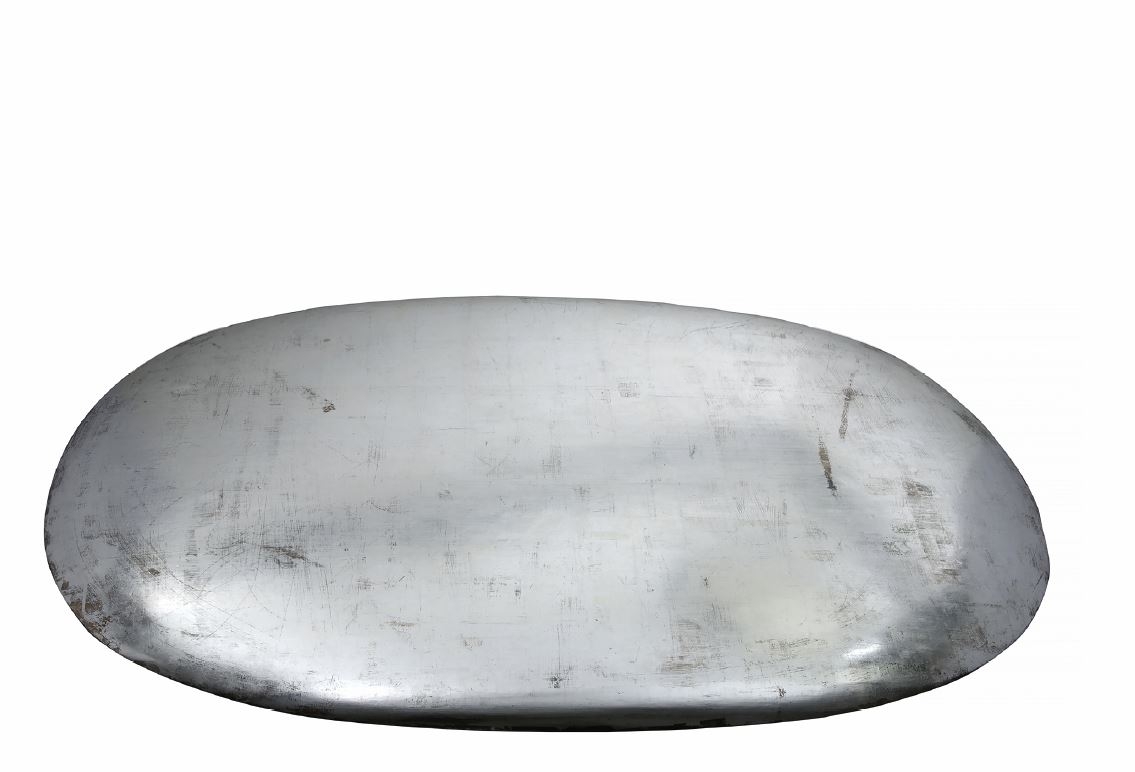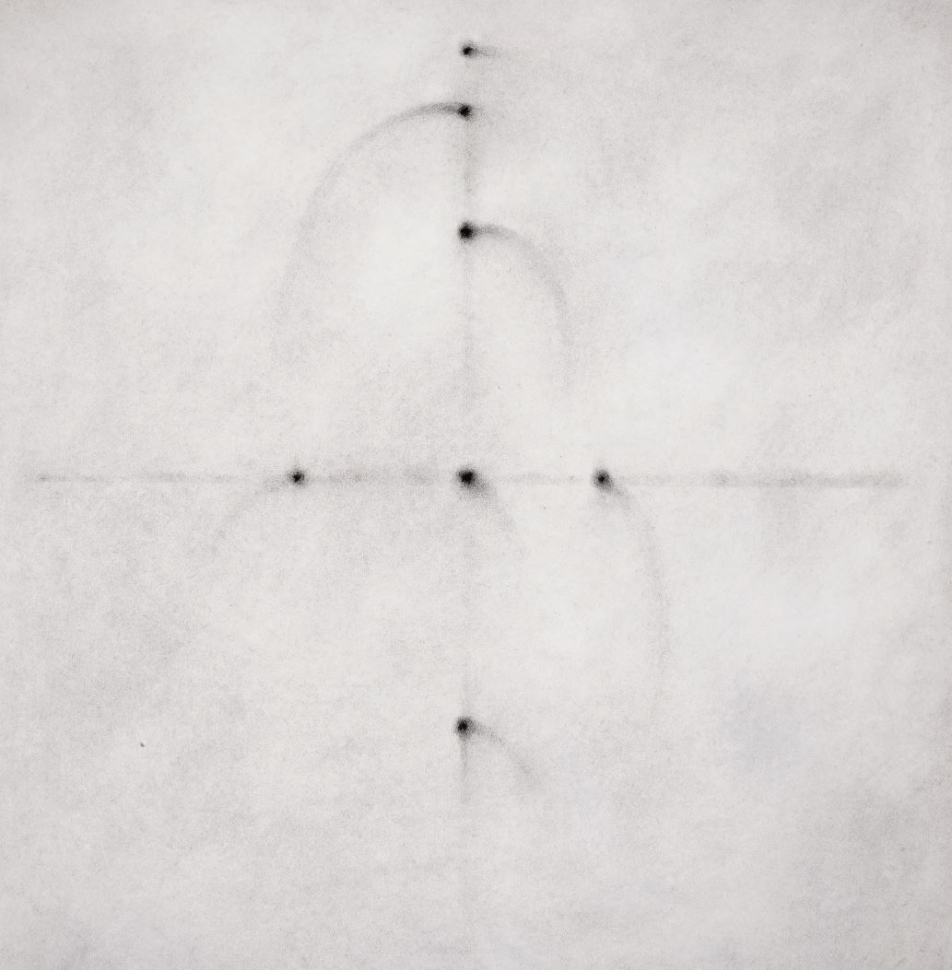Walk slow. Listen and watch Boris Klepal
Stand still until the music dies away and you will become part of something more complex. Hearing and sight will create an interwoven tangle of lines of force hovering over a canvas or object illuminated by light shining through score paper or perhaps another set of musical instructions and diagrams. Visual art intertwined with music on the basis of inner bonds and principles returns to Prague City Gallery for the third time.
The Uncertain Situations exhibition is a followup on Five Uncertain Situations from 2022 and Two Uncertain Situations from last year, which, the same as this year, were prepared by the composer, performer and multi-artist, Ian Mikyska, and curator, Jitka Hlaváčková. Some of the works of art exhibited during the previous seven “Uncertain Situations” will be presented again in April but new works, as well as installations, will be added that will attract visitors to the Troja Château. This year, however, the exhibition space will not be limited to the former stables and chapel but will also include the open air areas and catch the attention of those who may be there only by chance.
At first glance, it might resemble a soundwalk. It is, in fact, the most accessible artistic discipline that can be successfully pursued by anyone who goes outside, looks around and listens carefully at the same time. The harmony of a street, a forest or a park with the sounds that belong to them is seemingly quite mundane and obvious – but there are more surprises to be discovered. The acoustic object then adds something new to the outdoor environment – perhaps contrasting only a little, yet strange and unexpected. A kind of audiovisual hat in the bushes, where it is not clear at first glance who threw it there and why. Passers-by are directly forced to stand still, and perhaps even stop thinking at that moment.
The contrast between technology and the outdoor space is created not only by the work of sound artist Jiří Suchánek – the creator of sound installations and objects, but also of Atom Tone sonification software, which creates sounds from different data sources. Using his software, one can listen to the gravitational waves of space objects, which is not necessarily any more adventurous than being lured through an outdoor object to enter the interior of Troja Château whose baroque architecture recalls an era in which art for all the senses was created.
But Mikyska’s and Hlaváčková’s concept offers much more than a sound walk. Especially with Mikyska, it has long been clear that he is not only interested in music and visual art as separate worlds. Nor is visual art-inspired music, as it is usually perceived by concert audiences raised on Modest Petrovich Mussorgsky’s Pictures at an Exhibition, too important to him. For Mikyska, the fundamental role is played by structures and plots, which do not need to be described or defined in terms of time precisely, but it is rather their context, and thus their mutual meaning, that should be captured and the whole subordinated to it.
In doing so, he refers to traditional Chinese culture, in which, according to him, “one of the most distinctive features is the significant degree of interconnection between the different fields of interest: poetry means calligraphy, calligraphy means painting, and all these fields are linked by a spiritual background with a basis in Mahayana (primarily Chan/Zen) Buddhism, Taoism and Confucianism”. For the composer, then, it is only natural to add sound to the mix.
The Prague Quiet Music Collective, which Mikyska founded in 2021, espouses music that seeks silence, peace and concentration, in which time intervals lose their precise length. It is music that reveals structures that cannot be precisely recorded in writing or sketched, but it is both absolutely necessary and beautiful to experience. This has been confirmed in the two previous runs of the Uncertain Situations event which will be partially recalled even this year.
Among other previous projects, it will be the piece Variabily with which composer Michal Wróblewski responded to Radoslav Kratina’s Frame with Form /L/, that will be presented. Its obvious variability in motion is reflected in the score in microintervals and glissandos. The alternation of “not in unison” / “in unison” instructions which indicate the movement of individual segments that should not, or instead must, fit together at a particular moment. The kinetic sculpture Collision of the Galaxies II by Pavla Sceranková will also return. This inspired Michaela Antalová’s composition of almost the same name, whose segments sometimes behave towards each other like cues in a theatre play: one provokes the other, and in turn must wait for the other’s cue. Some phases are repeated over and over again until the melodic voice fades out. Ian Mikyska’s and Jack Langdon’s Two Uncertain Situations will also be shown again.
For this year’s event at the Troja Château, Marie Nečasová is creating a new piece that will respond to drawings by Václav Boštík and Stanislav Kolíbal, as well as to the object Lying by Jindřich Zeithammel. Kory Reeder, an American composer and performer, will interact with a combination of an object and a drawing, which its creator, Kristina Láníková, called Evening Drawings while Removing the Make-up. The Slovak composer, Matej Sloboda, will contribute his new composition, and a sound installation is being prepared by Slavomír Hořínka.
The Overlapping Transformations composition by the composer Sylvia Lim will also be reprised from the year before last – but this time without The Thirty-Six Dramatic Situations series of photograms by Aleksandra Vajd, who was present at their creation. The old transformations will be set in a newly created environment independent of the original inspiration.
Exhibition Uncertain Situations will be held from 21 May to 10 November 2024 at the Troja Château. In addition to new works, it includes objects from the GHMP collections, artworks working directly with sound, meetings with musicians, concerts in the Château’s main hall, music workshops and more.
The author is a music journalist.


